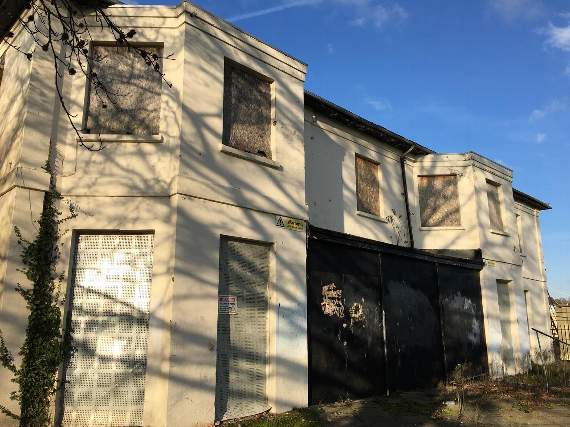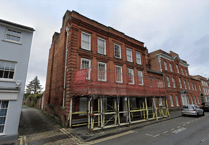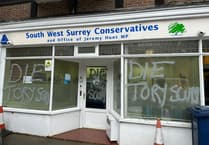THE Herald was invited on a guided tour inside the hoardings of Farnham’s Brightwells Yard development site in the build-up to Christmas.
For many years a pipe-dream, mired in red tape and seemingly endless planning wrangles, developer Crest Nicholson at long last began (meaningful) construction work on the redevelopment of East Street last autumn.
And, although giving little impression of the finished scheme, the tour by Crest project manager Mark Gould and development director Tim Jones revealed a lot has been achieved in recent months.
Archaeological digs have been undertaken (sadly without the discovery of any long-forgotten monarchs), a “spaghetti junction” of water and electricity cables redirected away from the development, and a temporary construction access bridge connecting the site to the A31 across the River Wey all but complete.
The works have not gone entirely without a hitch, with neighbouring Home Park House having had its water supply inadvertently knocked out last August, and a proposed 11-week, 24-hour eastbound lane closure on the A31 delayed after councillors pointed out Crest did not have the necessary consent.
Planning permission has now been secured for the 24/7 lane closure, however, and a reduced six-week closure is set to begin on Monday (January 7) until February 15 to complete the bridge, after which Borelli Walk will reopen in March and construction work can properly commence.
This will start with the demolition of the rear section of the Marlborough Head pub and the remnants of the former Palace Cinema, moving on to the Redgrave Theatre, former health centre and Brightwell Cottage this spring.
Crest hopes the first phase of Farnham’s new retail and leisure quarter will open in late 2020, followed by the new ‘town square’ and six-screen cinema in spring 2021, and 239 apartments above the shops in spring 2022. Project manager Mr Gould added he hopes to “plant the last grass seeds”, remove the temporary access bridge and permanently restore Borelli Walk by September 2022.
Apart from signing pre-let agreements with long-term partners M&S Food and Reel Cinemas, development director Mr Jones added Crest is yet to market the scheme’s 25 retail units – commenting that retailers are typically reluctant to commit to new stores until “a year or 18 months” before opening, meaning it is unlikely to announce any further retail partners until later this year.
He added the scheme will provide 400 public car parking spaces – 183 in a new multi-storey car park (off-setting the 227 spaces lost with the closure of Dogflud Way car park), and a further 217 (up from 210 currently) in the improved Sainsbury’s South Street car park – both of which will be operated by development partner Waverley Borough Council, which owns the Brightwells site.
A further private basement car park will provide 239 spaces – one for each apartment, of which there will be a mixture of one, two and three bedroom properties.
Security is also a significant consideration, Mr Gould added, with thieves having recently stolen JCBs from building sites across the area for use in ram raids, and Crest has ensured the boundaries and entrances to the site are well secured, covered by CCTV and well lit.
The project manager continued: “We’re fortunate in we’ve got a very good relationship with our neighbours who will tell us as soon as something is going on at the site that shouldn’t be. For example, when we first started working on the site last summer, one of the guys from Homepark House came over and told us somebody in a hi-vis jacket had been taking tiles off the roof of the toilet block! On the back of that we beefed up security and he hasn’t been back since!”
Lane closures have also been implemented in Dogflud Way to facilitate the diversion of utility pipes, and further lane closures will be necessary in East Street this month for further service diversions.
Three large trees protected by a tree conservation order will be pruned and maintained as part of the development’s new ‘town square’, while public walkways will be restored and new ones created to “knit” the new development to the existing town.




